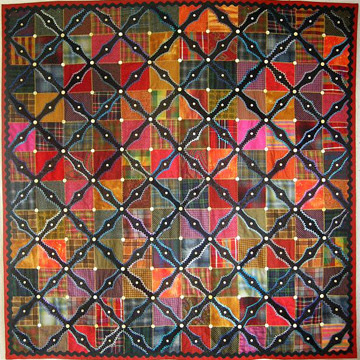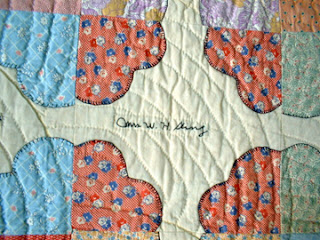I called this flag print "Shiloh" after an 1862 Tennessee battle.
According to the National Park Service site:
"No soldier who took part in the two day’s engagement at Shiloh ever spoiled for a fight again.”
The document print came from a very ragged comforter, a charm quilt made of hexagons. I had one piece of this patriotic print very much like the Sharpsburg Tan on the left. The only other piece worth saving in the comforter was a U.S. Grant presidential campaign fabric from the late 1860s or 1870s somewhat like this:
So I have dated the flag print as 1870s, like most of the prints in the tied comforter.
A few weeks ago I spent a few days sewing with my friend Bobbi who is making the Checkered Past pattern from a pack of fat eighths of 1862 Battle Hymn.
See the pattern with a photo of Bobbi's ancestor Hancy by clicking here:
I bet she has the top done by now.
The quilt is similar to the Lincoln Museum Quilt that Deb Rowden and I did for the museum in Springfield, Illinois a few years ago.
We used plaids and stripes---sort of like this. It's a digital sketch.
See more here:























































